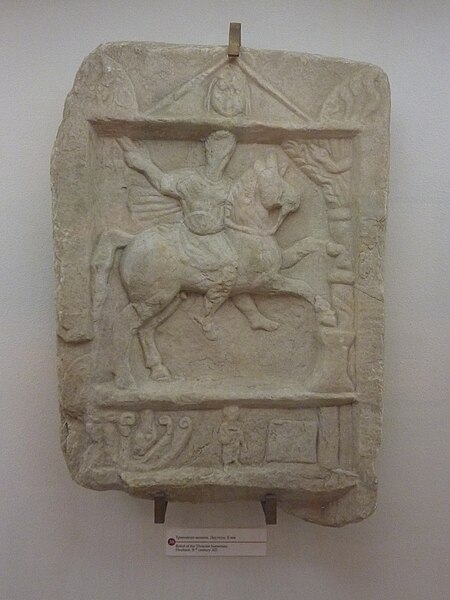The coat of arms of Moscow depicts a horseman with a spear in his hand slaying a basilisk and is identified with Saint George and the Dragon. The heraldic emblem of Moscow has been an integral part of the coat of arms of Russia since the 16th century.
Relief above the entrance to the Tretyakov Gallery.
Saint George and the Dragon
In a legend, Saint George—a soldier venerated in Christianity—defeats a dragon. The story goes that the dragon originally extorted tribute from villagers. When they ran out of livestock and trinkets for the dragon, they started giving up a human tribute once a year. This was acceptable to the villagers until a princess was chosen as the next offering. The saint thereupon rescues the princess and kills the dragon. The narrative was first set in Cappadocia in the earliest sources of the 11th and 12th centuries, but transferred to Libya in the 13th-century Golden Legend.
Saint George Killing the Dragon, woodcut by Albrecht Dürer (1501/4)
Thracian horseman with serpent-entwined tree (2nd century)
Funerary relief of a Roman cavalryman trampling a barbarian warrior (4th or 5th century). Grosvenor Museum, Chester
Fenestrella interpreted by the Louvre as Horus on horseback spearing Set in the shape of a crocodile (4th century).





